After decades of neglect (at best) or even active suppression, the release of Ken Russell’s The Devils (1971) on DVD should be cause for celebration, particularly as it arrives in a 2-disk special edition from the prestigious British Film Institute. But the problems which have plagued the film since even before its release continue to follow it onto this new format. This is not by any means the fault of the BFI itself; in fact, given the circumstances they’ve come out with an admirable edition and I’m certainly grateful to have the film, even in this less than optimal form, because the only alternative is apparently not to have it at all.
What we get from the BFI is a copy of the original British X Certificate version in its proper widescreen aspect ratio. This, of course, was already compromised by cuts enforced by both the British Board of Film Censors and Warner Brothers, the American backers who financed the production. Those cuts did a certain amount of damage to Russell’s intentions, but what came later was a full-blown travesty, as Warners forced more severe cuts to make the film less “offensive” to an American audience, with that butchered version becoming the only one which remained available until a partially restored director’s cut was assembled in 2004. That version, which was the closest it was possible to come to Russell’s original vision, has been shown at certain special screenings … but remains widely unavailable.
Ken Russell
 Ken Russell, once dubbed “an appalling talent”, held a problematic place in British film history, one somewhat analogous to Michael Powell’s. He was seen as a director who lacked proper restraint, who indulged in too much excess, too much openly expressed
Ken Russell, once dubbed “an appalling talent”, held a problematic place in British film history, one somewhat analogous to Michael Powell’s. He was seen as a director who lacked proper restraint, who indulged in too much excess, too much openly expressed 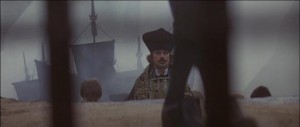 emotion. Almost like a relative who causes embarrassment at a social gathering by being too loud, too outspoken. This view ignores the control and expressive power evident in Russell’s handling of the “excess” in his best work; it’s not a
emotion. Almost like a relative who causes embarrassment at a social gathering by being too loud, too outspoken. This view ignores the control and expressive power evident in Russell’s handling of the “excess” in his best work; it’s not a
matter of a wild  and uncontrolled talent, but rather of a talent whose interests and purposes go beyond what is generally considered acceptable. In this, perhaps Russell is closer to Andrzej Zulawski, another “hysterical” filmmaker whose works are violently divisive.
and uncontrolled talent, but rather of a talent whose interests and purposes go beyond what is generally considered acceptable. In this, perhaps Russell is closer to Andrzej Zulawski, another “hysterical” filmmaker whose works are violently divisive.
Russell’s early career at the BBC resulted in something like his very own genre, dramatized documentaries about the lives of artists and composers in which he used the expressive means of cinema to evoke the emotions he himself felt when confronted with the art and music he was passionate about. While films like Elgar (1962) and Song of Summer (1968) were greeted with appreciation by critics and audiences, others like Dance of the Seven Veils (1970) caused controversy.
That last, an “interpretation” of the life and work of Richard Strauss, ended up being suppressed by the BBC after the Strauss family sued for defamation over the suggestion that the composer was more closely implicated with the Nazis than he later claimed (as a result of those legal troubles, the film was dropped from 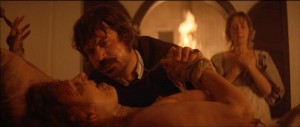 the Ken Russell at the BBC DVD set released in 2008, though a poor quality copy can be viewed on YouTube in six parts). Russell returned a number of times to the links between powerful music and fascist impulses – in Mahler (1974) and Lisztomania (1975),
the Ken Russell at the BBC DVD set released in 2008, though a poor quality copy can be viewed on YouTube in six parts). Russell returned a number of times to the links between powerful music and fascist impulses – in Mahler (1974) and Lisztomania (1975),  in particular. The Strauss film also contains inflammatory religious imagery, most notably the sequence in which Zarathustra comes across a group of nuns writhing in a kind of sexual frenzy which prefigures scenes in The Devils, made the following year.
in particular. The Strauss film also contains inflammatory religious imagery, most notably the sequence in which Zarathustra comes across a group of nuns writhing in a kind of sexual frenzy which prefigures scenes in The Devils, made the following year.
In the 1950s, Russell had converted to Catholicism, along with his first wife Shirley (costume designer on his films up to Valentino in 1977), and religious imagery occurs in many of his films. But that imagery is often troubled, as in Dance of the Seven Veils and The Devils, and one might suspect that what attracted Russell was more the flamboyance and ostentation of the Church than its religious principles, which in his work are repeatedly seen to be at war with human nature. That war, in addition to the conflict between liberty and fascism, is at the heart of The Devils, which stands as his masterpiece, and one of the greatest British films ever made.
The Devils (1971)
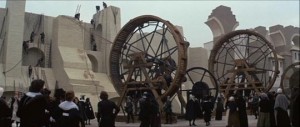 Based on actual events which occurred in the French provincial town of Loudun in the 17th Century, as filtered through Aldous Huxley’s book The Devils of Loudun and John Whiting’s play The Devils, also based on Huxley’s book, Russell’s film manages the
Based on actual events which occurred in the French provincial town of Loudun in the 17th Century, as filtered through Aldous Huxley’s book The Devils of Loudun and John Whiting’s play The Devils, also based on Huxley’s book, Russell’s film manages the  remarkable feat of seeming entirely modern and yet embodying a worldview firmly rooted in a historical past which is alien to us. He chose not to go for historical “accuracy” in design, but rather, with production designer Derek Jarman (remarkably working on his first film) and cinematographer David Watkin, created an imaginary 17th Century out of the idea that the people who lived there would have felt themselves to be thoroughly modern, not already embedded in the “past” – and as a result, forty years after the film was made, it seems completely undated. Jarman’s designs for the city also owe a debt to Carl Dreyer’s La Passion de Jeanne d’Arc (1928).
remarkable feat of seeming entirely modern and yet embodying a worldview firmly rooted in a historical past which is alien to us. He chose not to go for historical “accuracy” in design, but rather, with production designer Derek Jarman (remarkably working on his first film) and cinematographer David Watkin, created an imaginary 17th Century out of the idea that the people who lived there would have felt themselves to be thoroughly modern, not already embedded in the “past” – and as a result, forty years after the film was made, it seems completely undated. Jarman’s designs for the city also owe a debt to Carl Dreyer’s La Passion de Jeanne d’Arc (1928).
At the tail end of religious wars between Catholic and Protestant in France, Cardinal Richlieu (Christopher Logue) is determined to consolidate his power over the nation and over the weak King Louis XIII (Graham Armitage). As part of his program, he is destroying the walls of fortified towns to crush the last vestiges of independence. But the King has given his word that the walls of Loudun will remain, a position which offends the Cardinal deeply because in Loudun Catholic and Protestant have reached an accommodation which represents an alternative, peaceful order which threatens his plans.
In Loudun, the priest Urbain Grandier (Oliver Reed, in the finest performance of his career) lives a profligate life. His sexual appetites are at odds with his role as priest, and it seems that on one level he has a self-destructive impulse, a desire to end his inner conflicts and join his God. When Richlieu’s man, Baron de Laubardemont (Dudley Sutton), arrives with equipment, slaves and an armed escort, and begins to tear down the walls, Grandier stands against him and forces him to back down. With the King’s promise to spare the town, de Laubardemont has no authority to carry out Richlieu’s orders.
At the same time, at the local Ursuline convent, where the nuns are mostly women sent by families who couldn’t afford dowries and just wanted to get rid of them, the frustrated and deformed Sister Jeanne (Vanessa Redgrave) has developed an erotic fixation on Grandier, although she has never met him, merely seen him briefly through a grating in the wall. As her fantasies become more intense, an epidemic of hysteria begins to spread through the convent, a potent reservoir of sexual repression becoming undammed; the nuns’ new confessor, the jealous Father Mignon (Murray Melvin), manages to get Sister Jeanne to name Grandier as the demonic interloper who is stirring up unwholesome desires among the sisters. And so the process of crushing the opposition to Richlieu’s plans begins.
In order to destroy Grandier, de Laubardemont brings in the exorcist Father Barre (Michael Gothard), who whips the nuns into a frenzy of sexual abandon in order to establish the presence of the devil in the convent. This becomes a performance repeated many times for an audience of tourists and citizens who find the nuns’ naked debaucheries enormously entertaining. But set against the increasing debasement of religion for political purposes, the film shows the transformation of the arrogant, hedonistic Grandier into a man driven not merely by political principles rooted in a passionate belief in the city’s independence 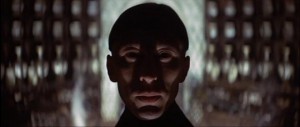 and the right of its citizens to their own autonomy, which includes the right of both Catholic and Protestant to live and prosper within its walls. The big change in the priest is the discovery of a sense of purpose outside his own physical desires, the discovery of his own spiritual core. As the nuns are destroyed by the exorcists and politicians, the fusion of religious and social impulses in Grandier gives him the strength to withstand persecution and torture, to become a martyr whose unshakeable conviction reveals the utter hypocrisy of his tormentors, a fact which drives them to increasing frenzies of violence in that way of all bullies whose essential weakness is publicly exposed.
and the right of its citizens to their own autonomy, which includes the right of both Catholic and Protestant to live and prosper within its walls. The big change in the priest is the discovery of a sense of purpose outside his own physical desires, the discovery of his own spiritual core. As the nuns are destroyed by the exorcists and politicians, the fusion of religious and social impulses in Grandier gives him the strength to withstand persecution and torture, to become a martyr whose unshakeable conviction reveals the utter hypocrisy of his tormentors, a fact which drives them to increasing frenzies of violence in that way of all bullies whose essential weakness is publicly exposed.
Eventually, Barre produces enough “evidence” to have Grandier arrested and tried for sorcery. The outcome is inevitable. With the fall of Grandier, the town also falls. But the victory of the politicians is sour, because on a spiritual, emotional and philosophical plane Grandier proved stronger than them.
All of these events are part of the historical record, including the sordid sexual details of the “exorcisms” and the shows put on for the townspeople. But of course, those details were highly problematic when presented on screen in 1971.
The British Certificate X version
Once the film was shot and edited, it immediately ran into trouble, not only with the censors, but also with the American backers, Warner Brothers. Interestingly, the censors recognized the seriousness and quality of the film, while the executives at Warners were appalled and offended. It didn’t matter that, as Russell pointed out, he had simply shot the script which those executives had approved. On screen, it was all too much for them, and they began chipping away at the film.
Russell and his editor Michael Bradsell were faced with trying to satisfy the demands of the censors and studio executives while preserving as much of the film’s intentions as possible. In some cases, this was a matter of trimming shocking details so that they passed more fleetingly; in other cases there were important structural concerns. Most damagingly, Russell was forced to cut out what came to be known as the “rape of Christ” sequence. In the film, the King pays a surprise visit to the convent to observe the insanity for himself; he finds Barre and his assistants up to their necks in naked cavorting nuns, watched by a laughing audience of wealthy burghers. The King plays a trick, using a box 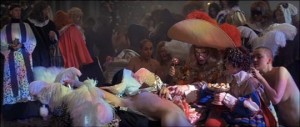 which he claims contains a vial of Christ’s blood to expel the demons, only to reveal that the box is really empty. Having exposed the crucial lie, he leaves and the nuns, deprived of the justification of possession for their sexual antics, in essence turn against
which he claims contains a vial of Christ’s blood to expel the demons, only to reveal that the box is really empty. Having exposed the crucial lie, he leaves and the nuns, deprived of the justification of possession for their sexual antics, in essence turn against  their own religion, dragging a life-size crucifix from the wall and, to put it bluntly, raping the figure of Christ. This, for Russell, was a crucial moment, as the manipulations of Barre and de Laubardemont are seen to have completely corrupted any pretence of authentic religious feeling, the destructive triumph of politics over the spiritual. But both the BBFC and Warners insisted it had to go.
their own religion, dragging a life-size crucifix from the wall and, to put it bluntly, raping the figure of Christ. This, for Russell, was a crucial moment, as the manipulations of Barre and de Laubardemont are seen to have completely corrupted any pretence of authentic religious feeling, the destructive triumph of politics over the spiritual. But both the BBFC and Warners insisted it had to go.
 Eventually, The Devils was whittled down sufficiently for the BBFC to give it an X Certificate, as it would do that same year to Sam Peckinpah’s Straw Dogs and Stanley Kubrick’s A Clockwork Orange. You almost have to feel sorry for the censors at that time, faced with such rapid changes in social attitudes, trying to maintain some sense of order while also trying to be open to new, more disturbing forms of artistic expression. Although The Devils had been compromised by this process, it nonetheless emerged as a remarkable, original and powerful piece of work. But one which was savagely attacked by more conservative critics and local authorities, some of whom banned it outright.
Eventually, The Devils was whittled down sufficiently for the BBFC to give it an X Certificate, as it would do that same year to Sam Peckinpah’s Straw Dogs and Stanley Kubrick’s A Clockwork Orange. You almost have to feel sorry for the censors at that time, faced with such rapid changes in social attitudes, trying to maintain some sense of order while also trying to be open to new, more disturbing forms of artistic expression. Although The Devils had been compromised by this process, it nonetheless emerged as a remarkable, original and powerful piece of work. But one which was savagely attacked by more conservative critics and local authorities, some of whom banned it outright.
But even the approved British version was too much for the American backers and Warners insisted on even more cuts, some of which (like the insistence that every trace of pubic hair had to be removed) began to render the film incoherent. In time, this Warner version was reintroduced to England and the X Certificate version disappeared completely.
But what exactly was the issue here? Not simply the nudity, as that barrier was being knocked over by numerous films in the early ’70s. Not simply the violence – Warners quite happily released A Clockwork Orange that same year. And of course, just two years later, the same company proudly released a film in which an adolescent girl graphically mutilates her own genitals with a crucifix. What made The Exorcist (1973) acceptable – and worthy of Academy Award nominations – while The Devils was beyond the pale?
It seems that this has more to do with the actual fabric of the film, the ways in which violence, sexuality, religion and politics are so inseparably linked. The Devils offended the puritanical streak that remains strong in the United States. It questioned the uses to which religion is put by politics to manage and control a nation’s people (a theme which remains highly pertinent in today’s political climate), while The Exorcist wholeheartedly reaffirms the medieval worldview of the Church.
What remains puzzling is the fact that Warners’ antipathy to The Devils seems just as strong today, forty years after its release, as it was back in 1971. Although a director’s cut of the film, reincorporating some of the deleted scenes, was shown in 2004, it has never been made widely available. When Warners finally consented to let the BFI release the film on disk, the company wouldn’t provide original materials for a new high-def transfer, but instead turned over a Digi-Beta tape of the X Certificate version (hence the DVD-only release, as the quality is insufficient for Blu-Ray). And although the cut “rape of Christ” scene has already been shown on television in Paul Joyce and Mark Kermode’s documentary about the making of the film, Hell On Earth: The Desecration and Resurrection of The Devils, which was shown on Channel 4 in 2002, Warners refused to give permission for that material’s inclusion on the DVD; and so even the version of Hell On Earth included on the supplementary disk has been re-edited to remove the sequence (only slightly compensated for by the inclusion of additional interview material). The original broadcast version is still available on YouTube in six parts.
Given Warners’ admirable efforts to restore so many films over the past decade or so, this attitude towards The Devils comes to seem disturbingly pathological. So much has been seen on screen in the intervening decades which is uglier and more vicious, and far less justified than what was originally contained in Russell’s film, that there can be no rational reason for this continued abuse and suppression. In Hell On Earth, Father Gene Phillips, a Jesuit who among other things teaches film at Loyola University in Chicago and has screened The Devils many times for his classes, points out that, given context and intention, the scene of Regan abusing herself with the crucifix in The Exorcist is more offensive than the scene which remains censored from The Devils. Surely if a Jesuit can see the seriousness and value of Russell’s work, someone at Warners ought to recognize that it’s time to allow the film to be seen as originally intended.
I should add that I have a bootleg copy of the film containing the rape of Christ sequence; I’m not sure what the original provenance was, but a friend downloaded it a couple of years ago and gave me a copy. The quality is quite poor and it’s been cropped to 1.85:1, but it’s possible to gauge the impact of the sequence on the whole. As Russell asserted, dramatically it pushes the hysteria to its inevitable climax, showing that the authorities’ purported upholding of religious truth is a lie which is actually destroying the Faith, a point which is present but muted in the other versions. But I have to say that stylistically, to some degree, it damages the integrity of the film; to match the crazed behaviour of the nuns, Russell abruptly uses rapidly repeating zooms in and out, a technique which is at odds with the elegance of the rest of the film, and one which clearly dates it to the early ’70s in a way which nothing else in the film does.
The BFI edition
Given this history, I guess I’m grateful that the BFI has managed to do as much as it has done with the release. The Digi-Beta image is not up to the standards we’re used to now; the colours are slightly flat at times, and some of the wider shots are noticeably soft. But at least it’s in the correct aspect ratio.
 The supplements include, most importantly, a commentary track recorded a few years ago with Ken Russell joined by editor Michael Bradsell, and Mark Kermode and Paul Joyce. It’s a relief that someone did make the effort to record this before
The supplements include, most importantly, a commentary track recorded a few years ago with Ken Russell joined by editor Michael Bradsell, and Mark Kermode and Paul Joyce. It’s a relief that someone did make the effort to record this before 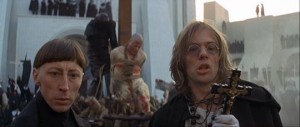 Russell’s death last Fall, but apparently it was recorded to the director’s cut and has been edited to fit the X Certificate version. This may account for the fact that while it’s quite lively for the first hour, it suddenly becomes sporadic, with lengthy silences as the excised rape of Christ sequence approaches and then never quite recovers once that section of the film is passed, suggesting that Russell and the others were discussing things no longer visible in this cut.
Russell’s death last Fall, but apparently it was recorded to the director’s cut and has been edited to fit the X Certificate version. This may account for the fact that while it’s quite lively for the first hour, it suddenly becomes sporadic, with lengthy silences as the excised rape of Christ sequence approaches and then never quite recovers once that section of the film is passed, suggesting that Russell and the others were discussing things no longer visible in this cut.
 Also included is the re-cut version of Hell On Earth, a fine documentary account of the film’s origins and its subsequent travails; a contemporary featurette, ironically produced by Warners, in which Russell is allowed to speak at length about his intentions for the film, before segueing to coverage of Peter Maxwell Davies’ recording sessions for the avant-garde score (in places somewhat reminiscent of John Corigliano’s superb score for Russell’s Altered States [1980]); some interesting behind-the-scenes
Also included is the re-cut version of Hell On Earth, a fine documentary account of the film’s origins and its subsequent travails; a contemporary featurette, ironically produced by Warners, in which Russell is allowed to speak at length about his intentions for the film, before segueing to coverage of Peter Maxwell Davies’ recording sessions for the avant-garde score (in places somewhat reminiscent of John Corigliano’s superb score for Russell’s Altered States [1980]); some interesting behind-the-scenes  super-8 material shot by Michael Bradsell, showing the construction of Derek Jarman’s remarkable sets; a brief conversation between Russell and Mark Kermode following a screening of the director’s cut at the National Film Theatre in 2004; and finally Russell’s second completed film, the amateur Amelia and the Angel (1959), a children’s story reflecting the director’s religious attitudes towards sin and redemption.
super-8 material shot by Michael Bradsell, showing the construction of Derek Jarman’s remarkable sets; a brief conversation between Russell and Mark Kermode following a screening of the director’s cut at the National Film Theatre in 2004; and finally Russell’s second completed film, the amateur Amelia and the Angel (1959), a children’s story reflecting the director’s religious attitudes towards sin and redemption.
If Warners had released original elements for a high-def transfer of the restored director’s cut, then this release would qualify without question as DVD of the year; as it is, it’s a good but imperfect package of a work which holds great importance in the history of British film, and as such can still be highly recommended.
pt 1 //www.youtube.com/watch?v=4JRa-G...
pt 2 //www.youtube.com/watch?v=xcjZJz...
pt 3 //www.youtube.com/watch?v=8yzMaB...
pt 4 //www.youtube.com/watch?v=B3X7Am...
pt 5 //www.youtube.com/watch?v=AG7uJr...
pt 6 //www.youtube.com/watch?v=fSf430...
Â


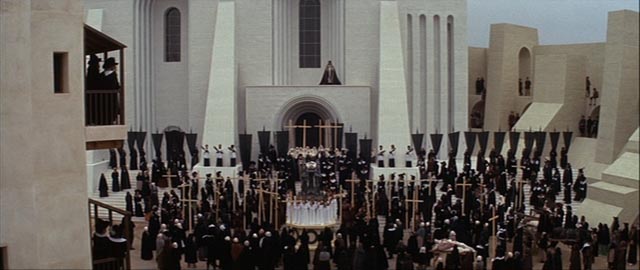
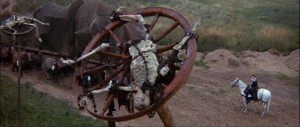
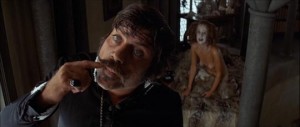

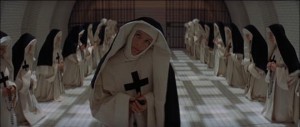
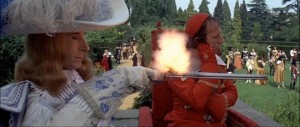
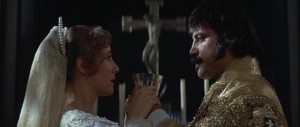
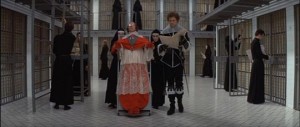
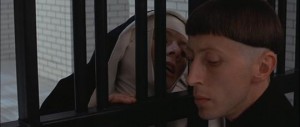
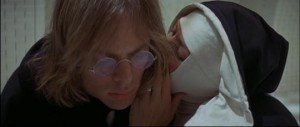
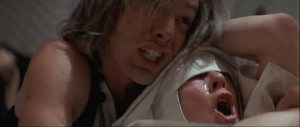


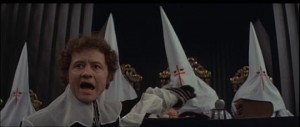









Afegeix-hi un comentari: